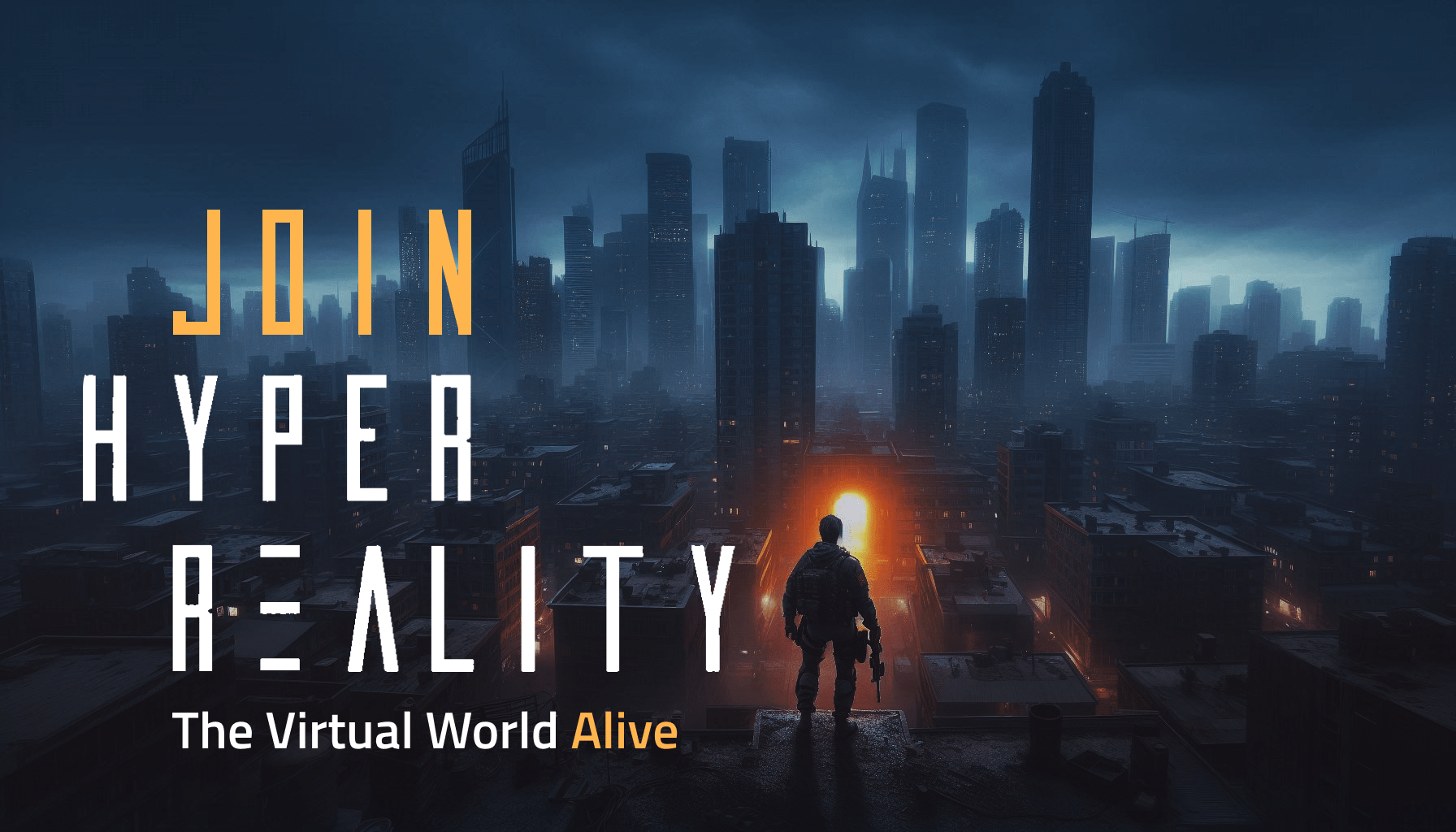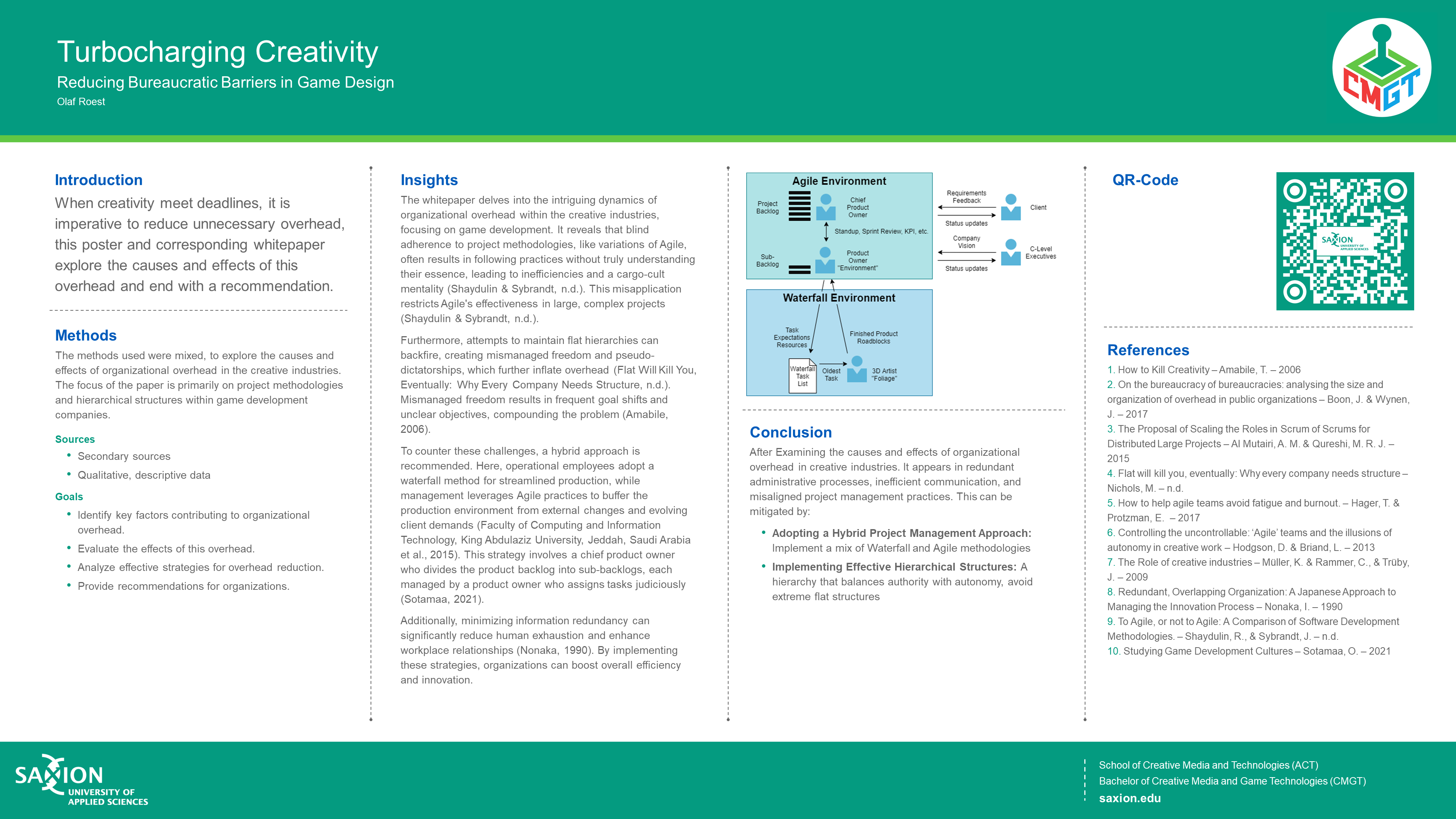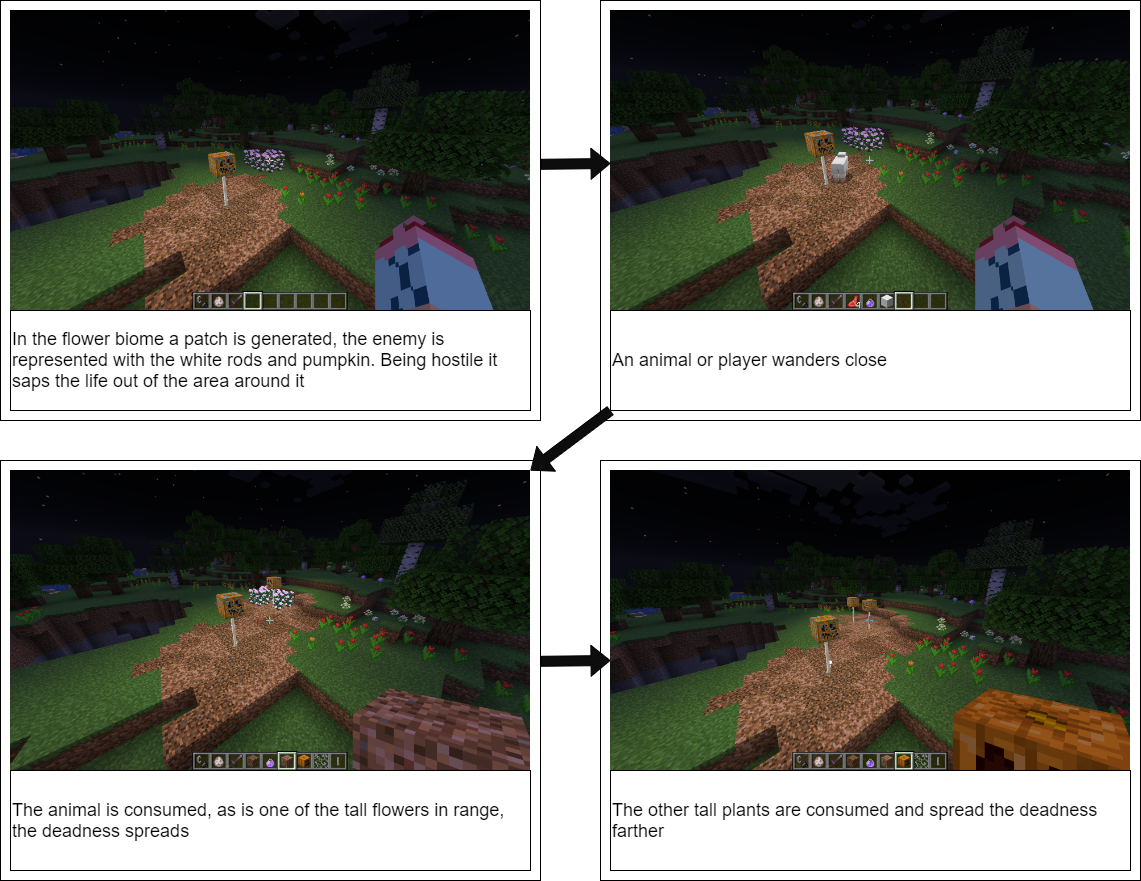This blog serves a dual purpose - firstly, it keeps me accountable and motivated to create and share my work with the world. Secondly, it serves as a platform to keep my network up-to-date with my latest projects, as well as a timeline of my growth and improvement over time. Whether it's my latest work or my lesser-quality products, I aim to showcase my journey as a producer and designer, and inspire others to pursue their own creative passions. So join me on this journey of self-improvement and exploration!
04/February/2025 by Olaf Roest
This study investigates the creation of successful plans to draw in and involve investors in Hyper Reality (HR), a cutting-edge Virtual Reality (VR) experience that combines virtual and physical interactions. The study identifies key elements of a prototype investor kit that is suited to the requirements of potential investors by addressing the difficulties StudioMAD (MAD)’s interns had getting Hyper Reality ready for market launch. The study looks at both theoretical and practical approaches to investor engagement using the Double Diamond framework, emphasising the variations in investor types, their contributions—both financial and non-financial—and their investment objectives. The study also explores how to create important documents and a demonstration of Hyper Reality that are tailored to the needs of Venture Capitalist (VC)s and Business Angel (BA)s, such as a pitch deck and executive summary. Iterative testing was done on prototypes of these materials to improve their usability and impact. The results provide practical insights for promoting sustainable growth in early-stage ventures and help to clarify how media and technology projects can strategically approach investor relations.

08/July/2024 by Olaf Roest
My primary goal was not just to enhance technical performance but to deeply understand the struggles engineers face. As a project manager, I often find myself on the other side of the table, making decisions that impact the engineering team's workload. This project gave me a firsthand experience of their challenges, fostering a newfound empathy for their role. And enabling me to better guide them throughout projects.
One of the key improvements was switching from a "delay until next tick" node to a more efficient data request system, which significantly reduced latency. Additionally, transitioning to a half-duplex communication model helped synchronize the server and Arduino, further lowering response times.
The result was a system with minimal latency, providing a smoother user experience in VR applications. This project underscored the importance of optimizing both hardware and software components to achieve the best performance in interactive systems

08/July/2024 by Olaf Roest
Designing a website that looks good and functions well can be challenging, especially when working with a new tool. I worked on my web design skills using Figma. I tackled this challenge head-on. My aim was to create a portfolio website without focusing on the actual coding, using Figma, a powerful design tool known for its flexibility and plugin capabilities.
I started with an intake conversation to understand the client's needs, followed by experimenting with various color schemes. Despite initial struggles, I managed to strike a balance by using red as an accent color and black and white as the primary colors. This phase taught me the importance of aesthetics alongside mechanics and dynamics in design.
The journey wasn’t smooth; I faced difficulties in mastering Figma's features and shortcuts. However, I found success in choosing the right fonts and learning to use layers and brushes for sketching. The final design incorporated interactive elements, enhancing user engagement.
This experience not only improved my design skills but also highlighted the significance of continuous learning and adaptation in mastering new tools like Figma


08/July/2024 by Olaf Roest
Excel has always been a versatile tool, but my perception of it changed dramatically through an intensive tutorial. Initially, I saw Excel as a relic from the past, mainly used by accountants. However, this tutorial revealed its potential in handling CMGT relevant data efficiently, which is invaluable for both billing clients and managing game statistics.
One of the key takeaways was learning how to use VLOOKUP and other functions for filtering results, which can be extremely helpful in team management scenarios. Another useful skill was ignoring errors and empty rows, particularly when dealing with tax data or inconsistent formats from invoices.
These improved Excel skills are not just about data manipulation but also about saving time and improving accuracy in professional settings. So I am very happy to have undergone these exercises.
21/June/2024 by Olaf Roest

17/April/2023 by Olaf Roest
As I reflect on the minor in Innovative Leadership, I'm filled with a sense of accomplishment and gratitude. It's been a challenging and rewarding journey, and I'm excited to share some of the highlights with you.
Starting with Leadership Communication 1 & 2, these courses challenged me to think critically about the way I communicate with others as a leader and manager. While I struggled with the first assignment and only received a grade of 6, I took it as an opportunity to grow and learn from my mistakes. By the second assignment, I received a grade of 9, showing how much I improved through practice and feedback.
Moving onto Psychology, I was fascinated by how the principles of psychology could be applied to leadership. Through this course, I learned about the different personality types and how to manage them effectively. I also discovered the importance of emotional intelligence and self-awareness in leadership. With a final grade of 8, I was pleased with the knowledge and skills I gained in this course.
Next was Introduction to Leadership, which gave me a strong foundation in the theories and principles of leadership. This course allowed me to delve deeper into the history of leadership and how it has evolved over time. I also learned how to apply different management models to different situations. With a perfect 10, I feel confident in my understanding of leadership theories.
HRM for Leaders provided me with valuable insights into managing human resources within an organization. I learned about recruitment, selection, training, and development, as well as the legal and ethical issues surrounding HRM. While I found this course challenging, especially with bad personal HRM experiences, I still managed to earn a respectable grade of 7.
Intercultural Communication was a course I found challenging, there were no strict rules and required a lot of empathic thinking. I gained a deeper understanding of the importance of culture in communication and leadership. I also learned how to navigate cultural and social differences and adapt my communication style accordingly. While the final grade was a 7, I still felt that the insights and knowledge I gained from this course were a good starting point to improve my knowledge.
The last course, Creative Leadership challenged me to think outside the box and approach leadership in innovative ways. This course allowed me to explore different forms of leadership, such as design thinking and co-creation. With a final grade of 9, I was thrilled with the creative thinking and problem-solving skills I developed through this course.
Overall, the minor in Innovative Leadership has been an incredible learning experience and a perfect fit for my goals and skills. While the grades are a nice representation of my academic achievements, it's the knowledge and skills I gained that I'm most proud of. I'm excited to take what I've learned and apply it to my future career, wherever it may take me.
Finally, if you're considering taking a role in leadership, I highly recommend following some form of formal education. In my minor, the courses provide a strong foundation in leadership principles and theories and also challenged me to think creatively and adapt to different situations. Through this minor, I gained invaluable knowledge and skills in communication, psychology, human resource management, intercultural communication, and creative leadership.
14/April/2023 by Olaf Roest
04/April/2023 by Olaf Roest
Special thanks to Katie Chironis, Luke Hale, Hans Wichman, and Sonia Michaels
As I sit down to write this post, the first post on this blog, I can’t help but feel a sense of purpose wash over me. It feels like only a week ago I didn't know what I wanted to do, what type of designer, or what role I wanted to play in a team in general. But now, six chapters later, my focus is honed like an arrow.
It all started with discovering what kind of art I enjoy in games. I realized that fun and story are paramount, while graphical fidelity is at the bottom of a long list. Next, I learned how to min-max my resume to get past the machine filters and impress potential employers. Alongside this, I received invaluable feedback on my resume from amazing people who were willing to help.
But perhaps the most important lesson I learned was about the portfolio. It's not just about showcasing your work; it's about empathizing with the viewer and creating media that resonates with them on a personal level. I learned to use images and section everything in neat boxes to improve scanability, and to always have it reviewed.
With all the preliminary work done, it was time for the interview and design tests. By spending just an hour making basic versions of the test questions, I gained a greater understanding of their requirements and my own skills.
Looking back on my journey, I feel a sense of accomplishment. I've grown as a game designer, producer, and human being. I'm excited to continue exploring this endlessly creative field, and I hope these exercises have been as enlightening for you as they have been for me. Thank you for joining me on this journey.
 View my answers to the guide here
View my answers to the guide here